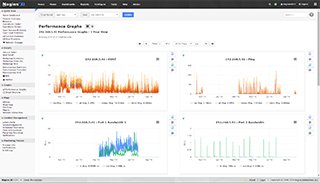
Service Checks
Need Help Configuring Nagios?
Our tech support team is happy to help you with any questions you might have. Contact us on our online support forum at https://support.nagios.com/forum/
Nagios XI Makes Monitoring Easier:
Nagios XI is the easy-to-use, enterprise version of Nagios that features:
- Web-Based Configuration provides advanced configuration features
- Monitoring Wizards make it easy to monitor new devices, applications, and services
- Customizable Dashboards allow for per-user customization
- Integrated Performance Graphs provide trending and capacity planning information
- Advanced Reports provide data insight and exporting capabilities
- Data Visualizations enable powerful analysis of patterns and problems
- Nagios Core Import functionality makes it easy to migrate from Nagios Core
- ... and many other features
Download a free 30-day trial to give Nagios XI a spin.
Inquire today and let our Quickstart team help you get started with Nagios XI
 Up To: Contents
Up To: Contents
 See Also: Active Checks, Host Checks, Check Scheduling, Predictive Dependency Checks
See Also: Active Checks, Host Checks, Check Scheduling, Predictive Dependency Checks
Introduction
The basic workings of service checks are described here.
When Are Service Checks Performed?
Services are checked by the Nagios Core daemon:
- At regular intervals, as defined by the check_interval and retry_interval options in your service definitions.
- On-demand as needed for predictive service dependency checks.
On-demand checks are performed as part of the predictive service dependency check logic. These checks help ensure that the dependency logic is as accurate as possible. If you don't make use of service dependencies, Nagios Core won't perform any on-demand service checks.
Cached Service Checks
The performance of on-demand service checks can be significantly improved by implementing the use of cached checks, which allow Nagios Core to forgo executing a service check if it determines a relatively recent check result will do instead. Cached checks will only provide a performance increase if you are making use of service dependencies. More information on cached checks can be found here.
Dependencies and Checks
You can define service execution dependencies that prevent Nagios Core from checking the status of a service depending on the state of one or more other services. More information on dependencies can be found here.
Parallelization of Service Checks
Scheduled service checks are run in parallel. When Nagios Core needs to run a scheduled service check, it will initiate the service check and then return to doing other work (running host checks, etc). The service check runs in a child process that was fork()ed from the main Nagios Core daemon. When the service check has completed, the child process will inform the main Nagios Core process (its parent) of the check results. The main Nagios Core process then handles the check results and takes appropriate action (running event handlers, sending notifications, etc.).
On-demand service checks are also run in parallel if needed. As mentioned earlier, Nagios Core can forgo the actual execution of an on-demand service check if it can use the cached results from a relatively recent service check.
Service States
Services that are checked can be in one of four different states:
- OK
- WARNING
- UNKNOWN
- CRITICAL
Service State Determination
Service checks are performed by plugins, which can return a state of OK, WARNING, UNKNOWN, or CRITICAL. These plugin states directly translate to service states. For example, a plugin which returns a WARNING state will cause a service to have a WARNING state.
Services State Changes
When Nagios Core checks the status of services, it will be able to detect when a service changes between OK, WARNING, UNKNOWN, and CRITICAL states and take appropriate action. These state changes result in different state types (HARD or SOFT), which can trigger event handlers to be run and notifications to be sent out. Service state changes can also trigger on-demand host checks. Detecting and dealing with state changes is what Nagios Core is all about.
When services change state too frequently they are considered to be "flapping". Nagios Core can detect when services start flapping, and can suppress notifications until flapping stops and the service's state stabilizes. More information on the flap detection logic can be found here.
